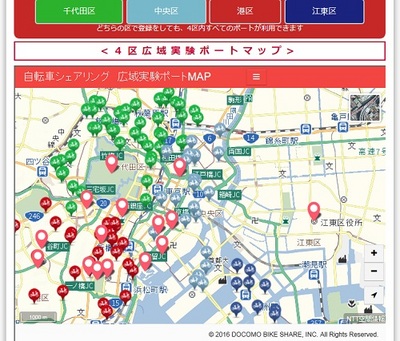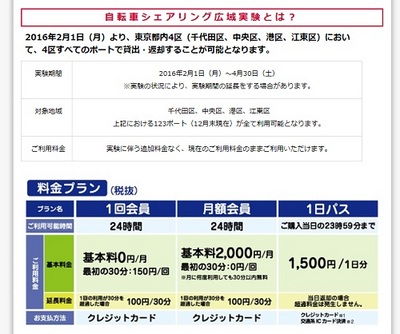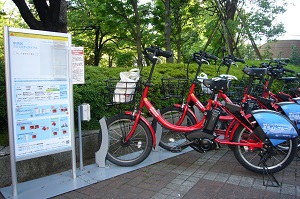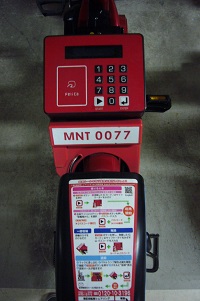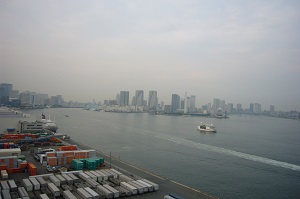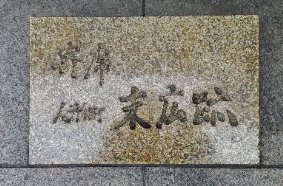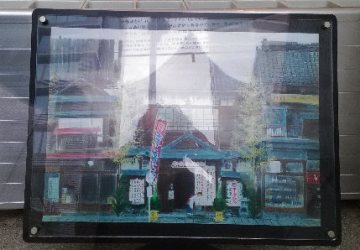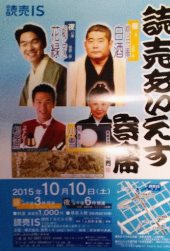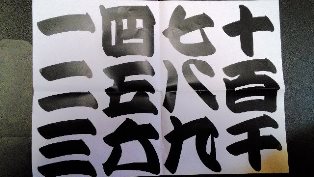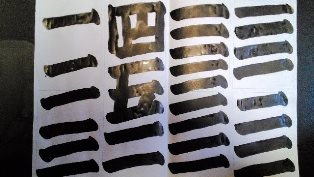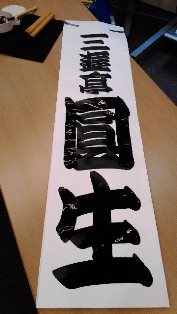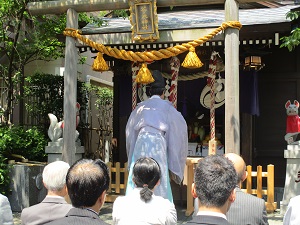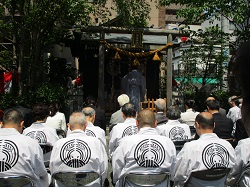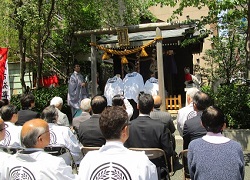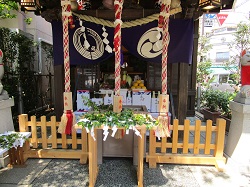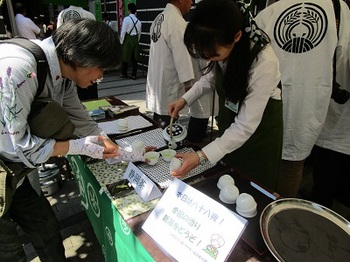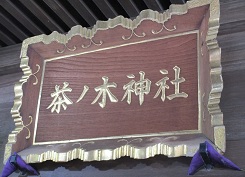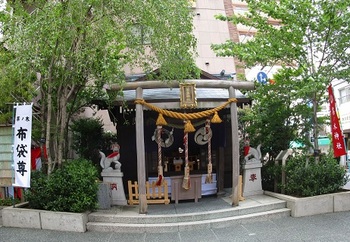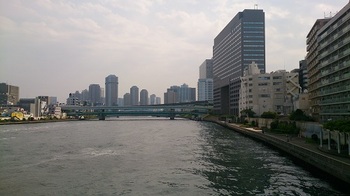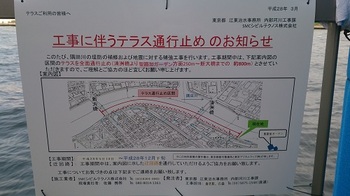I went to Ningyocho Kameido, a famous shop for tiled rice crackers.
It's on your right, tens of meters from the intersection of amazake Yokocho toward Hamacho Park.
One of the most famous and established Japanese confectionery is Kawarasenbei made and sold at Ningyocho Kameido. The head store is located along Amazake Yokocho Street.
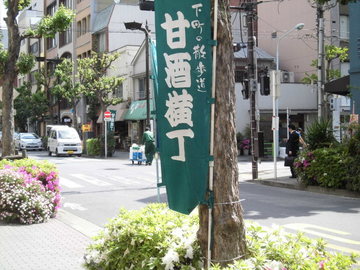
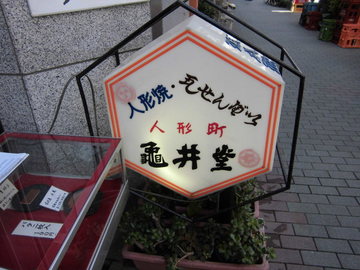
In fact, tiled rice crackers weren't my favorite. However, the concept was overturned after receiving the tiled rice cracker of Ningyocho Kameido. What have you eaten so far? Why is it so different? When I suddenly hit the simple question with the president, Mr. Sasaki, he answered with a full smile.
"We are stubbornly obeying the manufacturing method that has been founded. No ingredients other than sugar, flour, eggs or honey are used. In addition, no preservatives will be used, and puppet ware in bags after 3 days will be removed from the store. " Protecting tradition and thorough quality control seemed to be the secret of deliciousness. It's like this to protect the curtains.
For long time, Kawarasenbei, which is the nomenclature of the traditional japanese bisquit, was not one of my favorite sweets, but after I have experienced Kameido's delicacy, my whole image of this bisquit have changed. What have I been eating before? Why is this so good and special?
Mr. Kenji Sasaki, the president of the company gave me an answer distinctly and that is;
"We have not changed the recipe ever since company's foundation. We only use sugar, flour, egg, and honey. No preservative included and no display if the product (packed ningyoyaki) is over 3 days."
So, traditional recipe and strict quality control may be the key points.
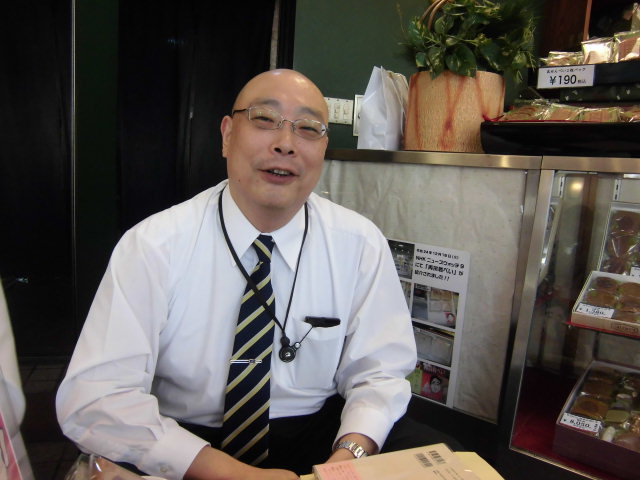
And the president told me the origin of Ningyocho Kamei-do.
In 1873, Kamei-do Sohonten, which was founded in Kobe Motomachi, was assigned to the first Ningyocho Sasaki family, an old house living in Tokyo since the early Edo period in 1929. The master of Kamei-do, Akiha Sasaki Genpatsu. It is the grandson of Sasaki Shoin who wrote the name of the bridge of the main pillar of Kyobashi.
In addition, Shinano Kamiakinobu, the father of Sasaki Branch, was the heavyweight of late Tokugawa shogunate and a large flagship book.
The first Kameido store, famous for its product Kawarasenbei, had started its business in Kobe in 1874. In 1927, Mr. Sasaki's grandfather Genpatsu Sasaki was given privilege to use the name "Kameido" and start a business of his own in Tokyo after many years of training.
Genpatsu's grandfather was Shiin Sasaki who is famous for the calligraphy of the Kyobashi bridge pillar.
Genpatsu's great grandfather, Shinanonokami Akinobu who was great grandfather of Genpatsu was high ranked magistrate during Edo era.
Morning Daio Shinano Moriaki (Chosandaifushina no Kamiakinobu)
At the end of the Tokugawa period, he served as Edo Nambokucho magistrate and foreign magistrates, and his name magistrate can be known through rakugo "Sasaki Masadan".
In addition, the mission of the Imperial Court, which proclaims Shinano Mamoru from the Imperial Court, is listed at the head office.
It is the great-grandfather of Ningyocho Kameido's first store owner, Genpatsu.
Shinanonokami Akinobu
During Edo era, Akinobu was high ranked magistrate bugyo in charge of finance, law, and foreign affairs. His management competence is known through Rakuko (Japanese comic story), "Sasaki Seidan (political talk) ". He was honored by Emperor as Shinannookami. The written imperial order can be seen at Ningyocho Kamiedo.
Akinobu is the great grandfather of the founder of Ningyocho Kameido, Genpatsu Sasaki.
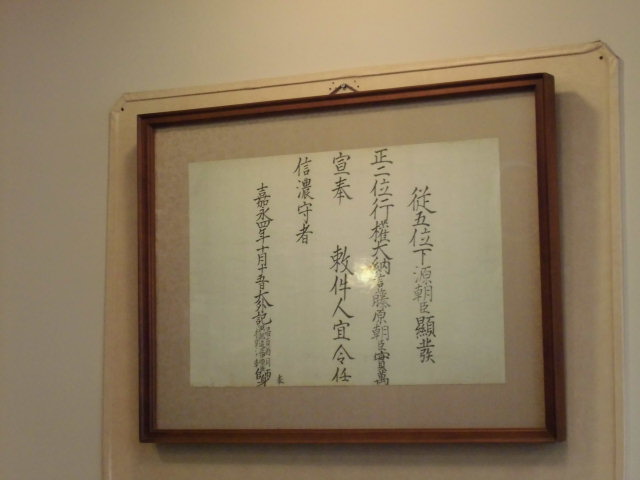
Sasakishiin
He is the eldest son of Moriaki Shinano, a Chinese scholar and poet. The main pillar of the calligraphy "Kyobashi" still gives the personality of Ginza Chuo-dori as the "Kyobashi Monument" and is designated as the ward Tangible Cultural Property in Chuo-ku.
This is the grandfather of Kenpatsu.
Shiin Sasaki
The firstborn son of Akinobu who was scholar and poet. The name of the Kyobashi bridge engraved on the pillar of the bridge which is registered as tangible cultural asset of the city of Chuo-ku, had been written by Shiin.
Shiin is the grandfather of the founder of Ningyocho Kamiedo, Genpatsu Sasaki.
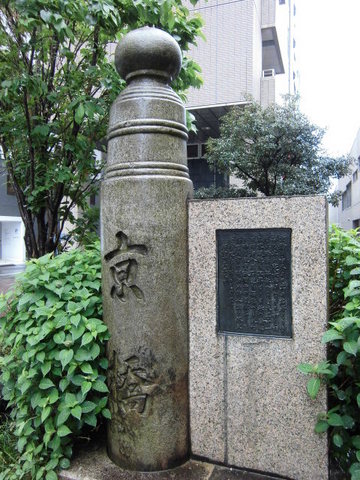
Akira Sasaki (Sasaki)
The first owner of Ningyocho Kamei-do. A cheerful boy who went to service from an early age while being a samurai, ran through the turbulent era such as confusion after the shogunate's dissolution, the Great East Japan Earthquake of the Taisho era, and the Great War of Showa with his wisdom and genius. Recognized by the founder of the Kamei-do Sohonke in Kobe and the owner of Ueno Kamei-do, he is entrusted with one store. "~ Kamei-do Monogatari-Tokyo Shitamachi Story" is a record document written by Masaha Sasaki, the third son of Akira, from his father, and details the cityscape at that time and the historical facts from the latter half of the Meiji era to the high economic growth period of Showa. It is a book that can be enjoyed as a historical book.
Akira is the grandfather of the current president.
Genpatsu Sasaki
The founder of Ningyocho Kameido. Though born in noble family, Genpatsu had to make a living after the great reform of the government. He had gone through the confusion of Meiji era, survived the great earthquake of Taisho era, and lived through the World War of Showa era, and won his success with his wit and talent. After years of training, he was given privilege to use the name "Kameido" and start his own business in Tokyo. Genpatsu's biography "Kameido Story" written by his third son can also be enjoyed as a history book which also writes about the culture and historical events from Meiji to Showa.
Genpatsu is the grandfather of Mr. Kenji Sasaki, now president of the company.
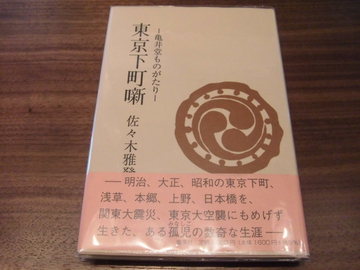
Ningyocho Kameido's tile crackers and Ningyo-yaki are made on the 3rd and 6th floors of the head office building, and you can always buy freshly made items. And the tile rice crackers are light, easy to carry, and can be stored at room temperature for 3 months, so they are useful as gifts regardless of the season. There is no need to worry about moisture because the tiled rice crackers are packaged in small pieces of 2-3 pieces. In addition, persimmon peanuts made from domestic peanuts born from the president's idea are very popular, and some customers buy them in bulk. Since it is not mass-produced to maintain quality, it is recommended that you go to buy it as soon as possible.
Kawarasenbei (japanese bisquit) and Ningyoyaki (sponge cake filled with red bean paste) are freshly made at the upper floor of the store. Kawarasenbei is made without any perservative, neverthelesss keeps at least for two months. It is wrapped in a small portion to avoid moist. Since Kawarasenbei is so light to carry, many people buy them for souvenirs.
The current popular selling line is Kakipea (peanuts and spicy rice crackers mix) using peanut only made in Japan, which came through the idea of Mr. Sasaki. Since it is so crispy and good, some customers buy them in bulk. To keep the good quality of the product, Kakipea is not produced in large quantitiesass, so if you buy them, visiting the store in early hours is recommended.
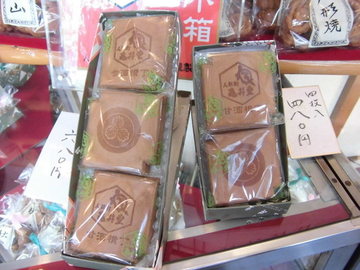
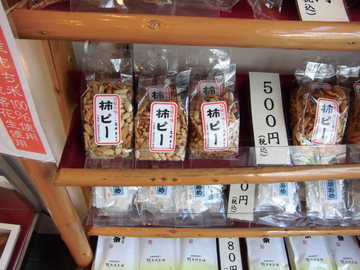
The number of items is abundant, so you may get lost, but you can advise on how to choose according to the application.
Varieties of products are displayed, but you can have an appropriate advice at the store.
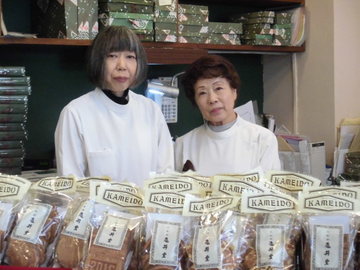
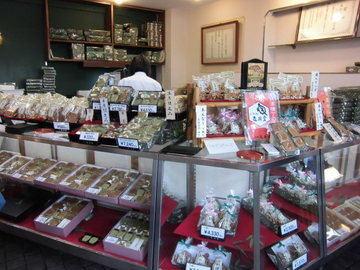 <Supplement>
<Supplement>
(From "~ Kamei-do Monogatata ~ Tokyo Shitamachi Story")
Quote from "Kameido Story"
*************************************************************
Around this time, Junichirou Tanizaki and Mrs. Matsuko came to shop. Tanizaki, wearing a black inverness, did not enter the store, stood at the end of the sidewalk, looked up at the signboard of the store, and sometimes looked into the store, but Mrs. Matsuko was close to the store and talked in various ways.
In these days, *Junichiro Tanizaki visited the store with his wife Matsuko. He wore black inverness coat, did not get in to the store but stood at the edge of the sidewalk, looking up at the signboard, sometimes peeking inside. Matsuko walked in and chatted with the shopkeeper.
*Junichiro Tanizaki: Japanese author, one of the major writers of modern Japanese literature.
*************************************************************
I'm a little glad if Mrs. Junichiro Tanizaki had a tiled rice cracker at home or brought it somewhere as a souvenir, and I think it's the same taste as at that time.
Did Tanizaki and his wife tasted the sweets at home or did they brought it to someone as a souveniour? Kawarasenbei that you can have now tastes as same as their time.
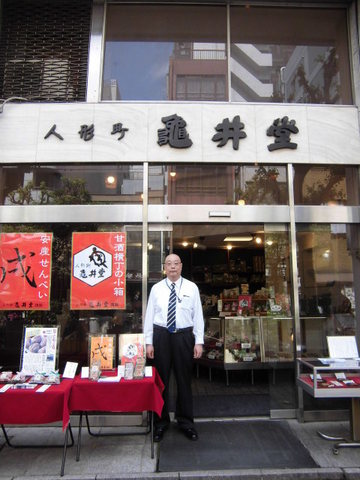 Mr. Sasaki, thank you very much.
Mr. Sasaki, thank you very much.
Please keep sending delicious sweets to the world forever.
Thank you very much Mr. Sasaki!
A great appreciation for the great story.
![]() the community cycle that takes place in Chuo-ku, Chiyoda-ku, Minato-ku, and Koto-ku?
the community cycle that takes place in Chuo-ku, Chiyoda-ku, Minato-ku, and Koto-ku?![]()
![]()
![]()
![]()
![]()
![]() ) and cycling around Tsukiji.
) and cycling around Tsukiji.![]()
![]()
